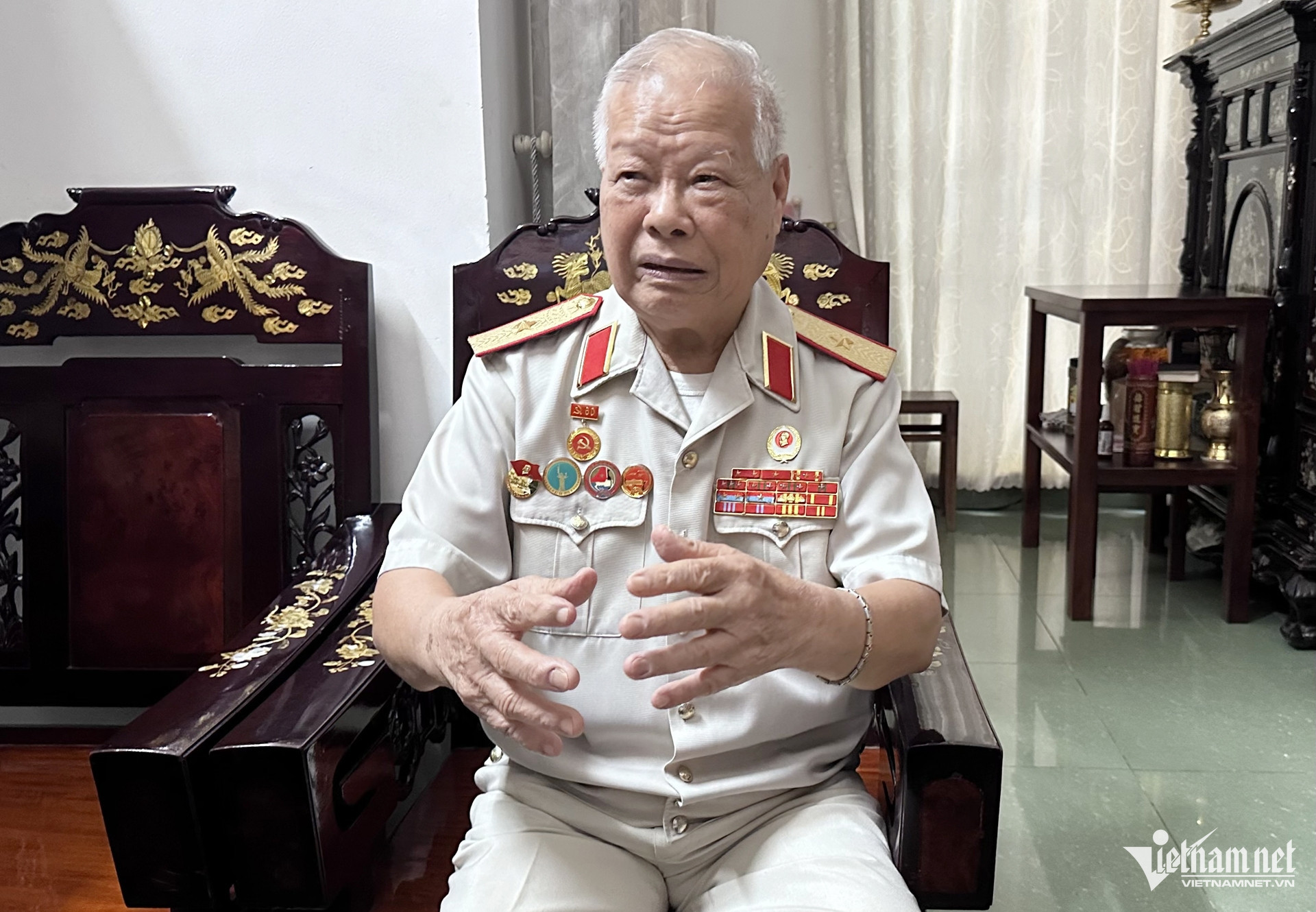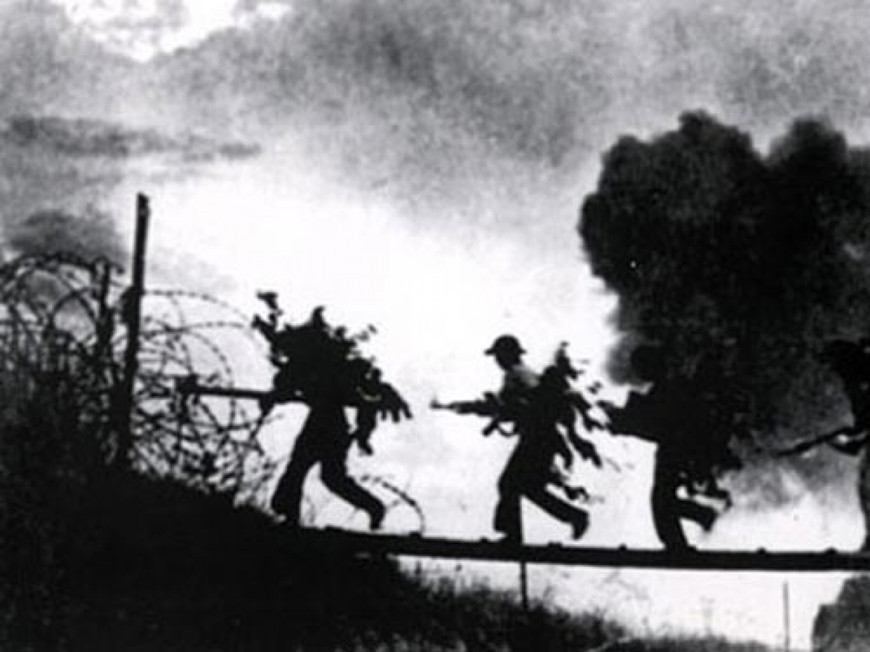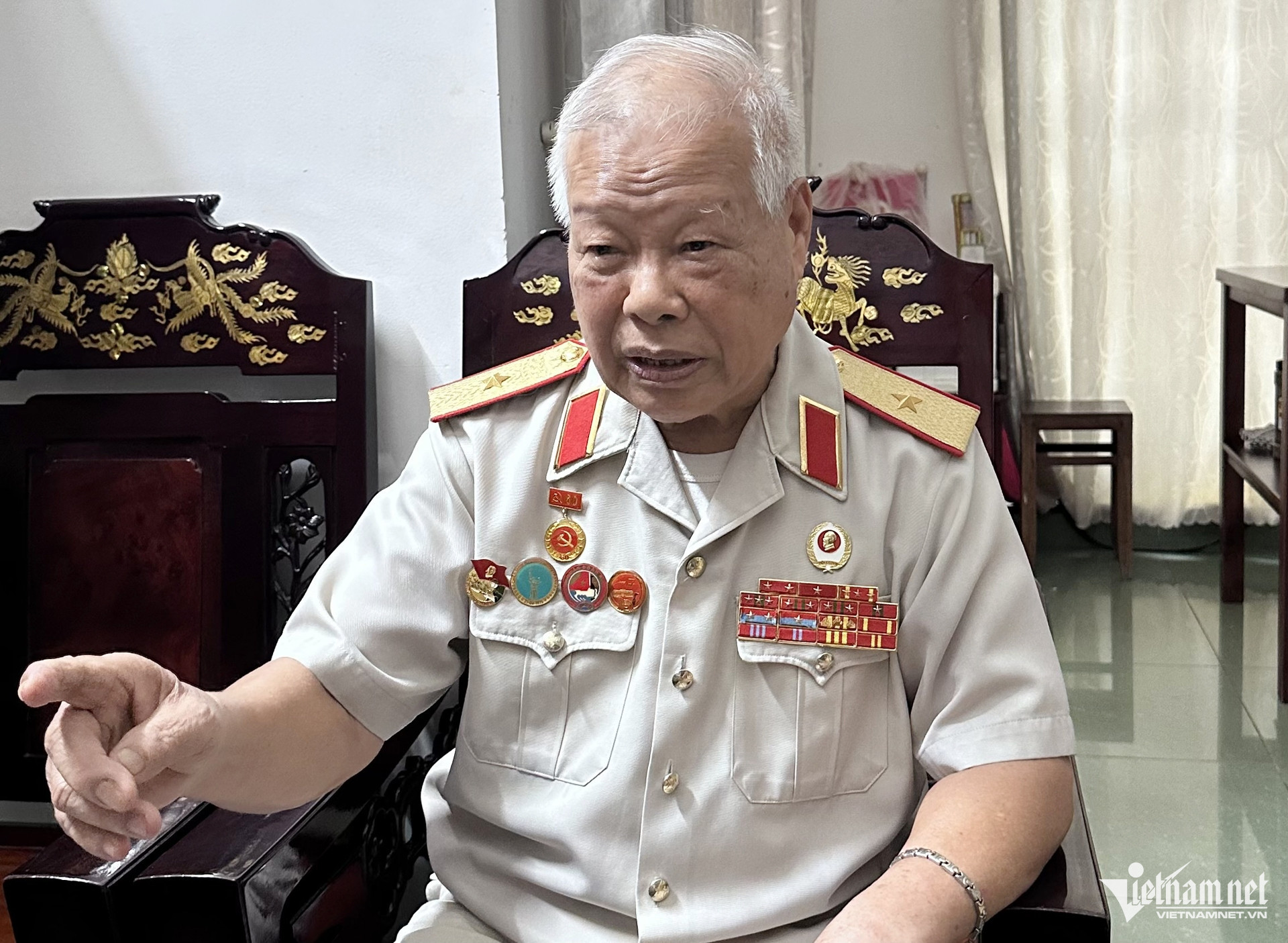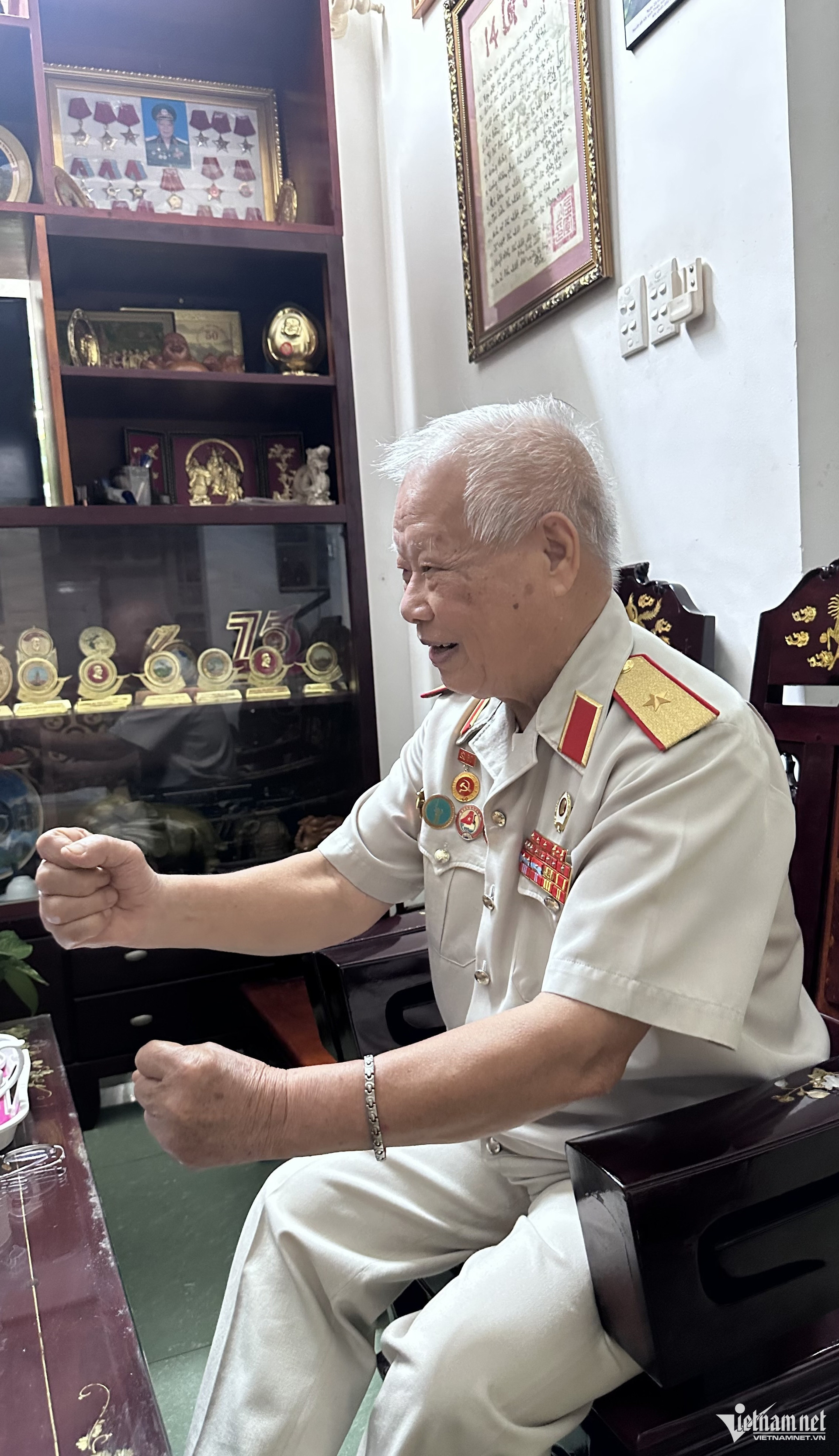On the 50th anniversary of the historic victory, Vietnam enters a new era - “building a glorious, radiant future for the nation.” In this special series titled “April 30 - a new era,” VietNamNet shares memories, insights, and reflections from experts, military strategists, and historical witnesses. They speak of the power of national unity, the will to defend independence and territorial integrity, and the faith guiding Vietnam into its next phase of development.
Readers are invited to reconnect with living legends - veterans, former political prisoners, student movement activists, and others - who devoted their youth, beliefs, and hopes to the day of complete victory.
As a frontline soldier in the Eastern flank of the Ho Chi Minh Campaign, Major General Nguyen Ngoc Doanh, former Deputy Political Commander of Corps 4 (now Corps 34), recalls a time of harsh, heroic combat that forever marked his life.
Now 86, General Doanh’s memories of battles that once straddled the line between life and death begin with the opening strikes that paved the way to the historic Ho Chi Minh Campaign.
From the “reconnaissance” battle of Phuoc Long...

Major General Nguyen Ngoc Doanh recounts historic battles from over 50 years ago.
General Doanh recalls that just five months after its formation, Corps 4 fought its first major engagement. The strength of the mobile main force was immediately confirmed with victory in the Route 14 - Phuoc Long campaign. At the time, Doanh was a lieutenant colonel, Political Commissar of Regiment 141, Division 7, and he personally led the charge and planted the flag on the Governor’s Office of Phuoc Long on January 6, 1975.
Phuoc Long became the first province in South Vietnam to be completely liberated. The victory had immense political significance.
“This battle was not only a military triumph but also a strategic reconnaissance of great importance. Phuoc Long, at the gateway to Southeast Vietnam, was a launchpad toward Saigon. Its liberation revealed the crumbling state of the Saigon regime and tested whether the U.S. would intervene - it became clear they would not.
That gave the Politburo the confidence to accelerate the plan to liberate the South before the rainy season in 1975,” Doanh recounts.
...To the 'steel gate' of Xuan Loc

Left: April 9, 1975: Infantry and tanks storm Xuan Loc, key to Saigon’s defense from the northeast.
Right: April 21, 1975: Enemy retreats from Xuan Loc, opening the path to Saigon; President Thieu resigns.

Liberation forces capture the enemy’s 18th Division command post during the Xuan Loc campaign.
Between 1974 and 1975, Corps 4 continued to fight alongside other forces in the Southeastern region in numerous campaigns.
“Among them, Xuan Loc was the fiercest and most challenging for Corps 4 on its march into Saigon,” Doanh affirmed.
Xuan Loc was considered by the U.S. and the Saigon regime to be an impregnable fortress - “lose Xuan Loc, and you lose Saigon.” They fortified it heavily.
The assault on Xuan Loc was assigned to Corps 4, in coordination with Infantry Division 6 (Military Region 7), two tank battalions, one artillery regiment, and two local infantry battalions. By the end of the campaign, they were reinforced with Regiment 95B (Division 325) and an additional tank company. General Hoang Cam commanded the campaign.
At 5:40 a.m. on April 9, 1975, Corps 4 opened fire on Xuan Loc. On the first day, they captured half of the town and the entire provincial administrative zone.
The fighting was brutal and costly. It was the bloodiest battle for Doanh and his comrades.
In the following days, battles in Xuan Loc - Long Khanh intensified. In response, commanders reorganized forces and shifted tactics from direct assault to encirclement, aiming to isolate and weaken enemy troops inside the town. They also destroyed reinforcements newly arrived at the outskirts.
Key positions such as Dau Giay crossroads and Nui Thi were seized. National Route 1 was cut, disrupting reinforcements from Bien Hoa and Trang Bom, effectively severing Xuan Loc from external support.
On April 15, 1975, liberation forces began shelling Bien Hoa Airport. At Xuan Loc, Divisions 7 and 341 relentlessly engaged the enemy, dismantling the 43rd and 48th combat brigades of the enemy's 18th Division and eliminating paratrooper units.
Realizing it could no longer hold Xuan Loc, the enemy retreated on April 20. On April 21, 1975, Xuan Loc town and Long Khanh Province were fully liberated.
A lingering regret in the final battle

The veteran general recounts Xuan Loc, the decisive battle that opened the gates to Saigon.
General Doanh shares that the greatest regret of the final campaign was his unit’s inability to carry out the honored mission of planting the flag atop Independence Palace, despite having previously planted the flag on the Governor’s Office in Phuoc Long.
On the night of April 29 leading into the early hours of April 30, 1975, as Corps 4 advanced into Saigon, they were ambushed at Suoi Mau Bridge in Bien Hoa. Forced to engage, they fought through the night.
“By principle, deep strikes should avoid engaging along the way, but when attacked, we had to respond,” he said.
After clearing the ambush, the unit continued along Route 1 to Hoa An Bridge, only to find two bridge spans destroyed. They had to reroute via the Vung Tau junction to continue into Saigon. By the time they reached Independence Palace, Corps 2 had arrived about 30 minutes earlier, and the flag-planting honor was lost.
A military life tied to Southeast Vietnam

Born in 1939, Doanh joined the army at age 24, weighing just 42kg and standing 1.55m tall - hardly the image of a frontline soldier. But his combat record is marked by bravery and endurance. Now a second-class wounded veteran with 78% disability, his life is a testimony to resilience.
Though born in a rural district of Hanoi, his military career unfolded in the southeastern battlefields. He fought in key battles including Dong Xoai, Phuoc Long, Dinh Quan, Lam Dong, Xuan Loc, Long Khanh, the Route 13 campaign, the Nguyen Hue Campaign, and the Ho Chi Minh Campaign.
In 1966, as commander of Battalion 1, Regiment 141, he was gravely wounded in Binh Phuoc. His comrades, thinking he was dead, prepared to bury him - until a soldier noticed his legs were still warm, and rushed him to emergency care.
Throughout the stories, Doanh’s voice often falters with emotion, remembering those who fell and never saw reunification.
“The moment the national flag waved atop Independence Palace, when the nation was unified, was pure joy. But my heart ached for the comrades who didn’t live to see it,” he said.
He is also proud that Saigon was preserved intact - unlike the devastated cities in other global conflicts.
Post-war reflections as military governor

After April 30, 1975, Division 7 was one of three divisions of Corps 4 tasked with military governance. Regiment 141, under Doanh, managed District 1, Binh Thanh, and Thu Duc (now Thu Duc City).
For over four months, Doanh, the famed Political Commissar, faced constant intellectual and political battles.
He recalls that false propaganda from the previous regime about the communists hindered initial outreach efforts. Security was unstable, with frequent theft and looting.
In his early community engagements, lacking local insight, he faced immense difficulty. But thanks to collaboration with former officials who had integrity and knowledge, he helped establish neighborhood committees, solidarity groups, and civic outreach in Tan Dinh ward within a month.
“In war, even when death was near, we kept fighting. So if I couldn’t fulfill my duty to bring peace and stability post-war, it would be a deep shame,” he said.
“Thanks to our sincerity, willingness to listen, and humility, the misunderstandings and rumors about the liberation forces gradually disappeared,” Doanh added.
Now at 86, with white hair and fading strength, Doanh carries a deep sense of duty to those who died. He continues searching for ways to bring fallen comrades back home to their families.
Bao Anh - Ho Van